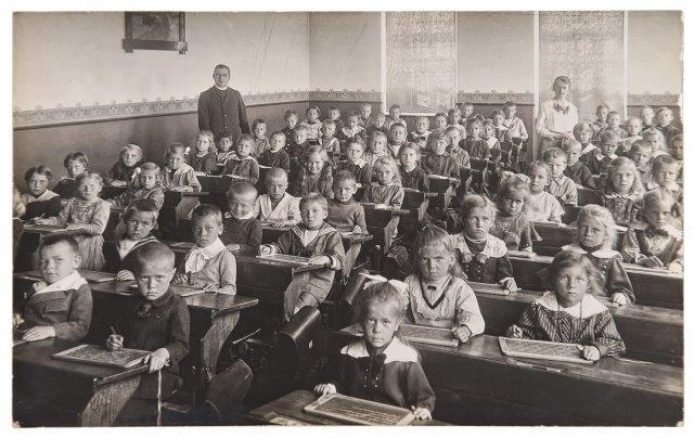Environmental Factors that Influence Behavior and Academic Achievement
By Isaac Wagner
Posted September 10, 2017 in Learning Environments
The classroom is without a doubt a very important meeting place since its conception. In its early days children were either home schooled if they were affluent and if not, they didn’t receive an education at all. After this, churches ran one-room school houses. The goal back then was to receive an education no matter what the environment was. Something (an environment of study), was better than nothing (no environment of study).
Now over 100 years later, most issues of the past like literacy rates have been corrected. Literacy rates are at a global all-time high now. The focus of leaders in education has now changed to improving the quality of education. They have noticed via concrete data & research that many educational objectives like reading comprehension, multiplication, and reading speed can be affected positively or negatively dependent upon the environment of study.
How come?
To simplify recent research, the best way to influence students’ behaviour towards the best academic performance is by controlling and balancing the things that stimulate the 5-human senses. It shouldn’t be any surprise for us to know how much we are influenced by our environment, after all our experiences are brought together cognitively by the senses. We design our homes to induce comfort, our workplaces to induce productivity, why not our schools to induce learning?
What is the ideal learning environment and how can we create it?
Essentially, the ideal classroom environment is one that is thoughtfully designed to favourably stimulate and balance the 5 senses towards learning. It is very simple to create an environment for learning if we address up front the things that affect the 5 senses negatively in the initial classroom design.
Changing Behaviours by Changing the Classroom Environment suggest that teachers sit back and observe where disruption occurs in the classroom and analyse the environment for the following:
Sight (vision):What are the students looking at? Did another student pass by and distracted others? Are they talking about a sign or art work? Are they getting enough sunlight?
For areas where focal attention is needed, work on removing visual distractions like the window views or a sign/art work, heavy aisle traffic areas from peripheral view.
Notice how much natural light the classroom has. Natural Light is well known to stimulate the production of serotonin, the chemical that is responsible for maintaining mood balance. But remember to avoid creating glare and/or shadows that can affect focus and divert attention elsewhere.
Focus on using colors that induce concentration like blue, as colors can also subconsciously affect behavior.
The furniture needs to be arranged in a matter where there is no visual obstruction to the area you need their attention on. Correct areas where you notice the students strain their vision.
Hearing (audition): Can students hear you properly? Is there an echo in the room? Is there outside noise?
Children need less reverberation and quieter spaces than adults to hear and understand what's being said or taught to them. In response to these statistics, the American National Standards Institute (ANSI) has reduced acceptable limits of background noise in classrooms.
Learn about their standards here.
Touch (somatosensation): Is it too cold? Is it too hot? Comfort and temperature has tremendous impact on behaviour and health.
Desk and Chairs must be the appropriate height as to provide comfort but more importantly correct ergonomic seating position. Educating students on proper sitting posture will help them avoid issues later in life.
Studies demonstrate the influence of temperature in thermally-conditioned classrooms on school work performance or learning. The Goldie Locks syndrome -not to hot, not too cold. 68-72 °F is the optimal temperature for reading speed, reading comprehension, and multiplication performance. The poorest performance was noticed in warmer temperatures of 81 to 86 °F.
If you don’t have thermally-conditioned classrooms, propose the school get one. If it is not possible, try to control temperature with the following solutions: If it too warm, open windows to create ventilation. Other solutions include shading windows and window treatments. If too cold, insulate windows & recommend the usage of layers.
Smell (olfaction): Do the supplies used for cleaning have a strong scent? Does the scent disrupt or aid learning?
Ventilation is also important as a means to eliminate distraction and health concerns. Studies at Harvard University reported significant cognitive impairment from impurities in the air. Contaminants that may be present in a classroom are molds, viruses, and odors from products such as cleaning supplies, art supplies, adhesives, paints, textiles and chemicals. Strong perfumes and foods also distract students.
Create air ventilation, if a proper system is not put in place.
Add indoor plants that are known to improve indoor air quality like the Boston Ferns & Golden Pothos. Plants also help with “Sight” as they provide ambiance.
Use natural oils that reduce stress during important exams like Rosemary & Lavender. Peppermint & Bergamot during lectures for memory.
Taste (gustation): Creating spaces where food is allowed should be encourage in classrooms. Hungry students do not make good learners as food insecurity can damage children’s health and brain development.
Laura Fleming, a librarian at New Milford High School in NJ, updated the school’s library and started allowing food and drinks in the library. Students now take advantage of the space during their lunch periods.
Create spaces for eating. If it’s located in an open area create air ventilation so those who are not eating remain without distractions.
Lookout for students who are experiencing food insecurity in the home, and refer to the proper counselling channels.
In the middle of the 20th century basic education became a global priority. Global organizations, leaders in education, scientist and researchers put in time & dedication to finding ways to reach more people and to improve quality of education. As leaders in education, directly or indirectly, we must all work towards implementing new data whenever possible. Each small step we take we are closer to providing our students not just an education, but a complete academic experience that gets them closer to realizing their dreams.
